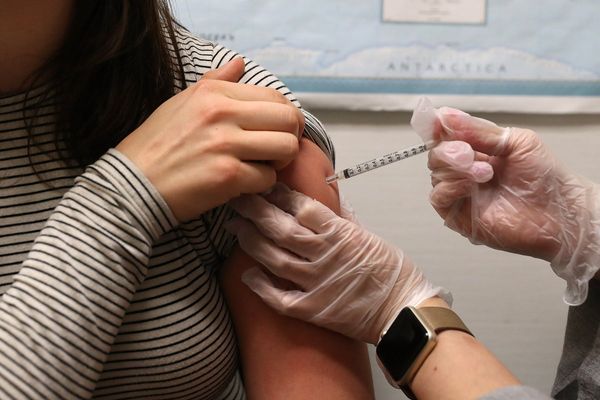London students have continued to score the best GCSE results in the country despite the capital seeing the largest increase in the number of teenagers failing to get a decent pass.
Hundreds of thousands of teenagers in England, Wales and Northern Ireland found out how they did in their GCSEs on Thursday, as top grades nationwide rose from last year but fewer entries scored a good pass, national figures show.
Londoners were “far ahead of any other region” when it came to achieving at least a 7 or an A grade, with 28.4% getting those top results.
This was more than 10 percentage points higher that the worst performing region - the North East (17.8%).
But London and south-east England saw larger year-on-year falls in the pass rates than all other regions.
Some 71.6% of entries in London were awarded a grade 4 or C - considered a “standard pass” - or above this year.
This is still the highest for any region in England, but down nearly a full percentage point from 72.5% in 2024.
In south-east England the proportion dropped from 70.4% to 70.0%.
Across the nations, more than a fifth (21.9%) of UK entries were awarded the top grades in 2025, up by 0.1 percentage points on last year, when 21.8% achieved the top grades.
This was higher than in 2019, the last year before the pandemic, when 20.8% of entries achieved the top grades.
But the figures, published by the Joint Council for Qualifications (JCQ), show the proportion of entries getting at least a 4 nationally has fallen from 67.6% in 2024 to 67.4% this year - a drop of 0.2 percentage points, but higher than the 67.3% in 2019.
The gap between girls and boys at the top grades is at the narrowest point this century, the data shows.
Nearly a quarter (24.5%) of girls' GCSE entries were awarded at least a grade 7/A compared to almost a fifth of boys' entries (19.4%) - a 5.1 percentage point gap.
This is the narrowest lead enjoyed by girls since at least 2000, which is the earliest archive data available.
Meanwhile, 70.5% of girls' GCSE entries were awarded at least a grade 4/C compared to 64.3% of boys' entries - a 6.2 percentage point gap.
The overall rate for grades 1/G or above is 97.9%, which is the same as 2024 but is down on 98.3% in 2019.

Education Secretary Bridget Phillipson said this cohort of students had shown "remarkable resilience" despite the disruption to their education during the pandemic.
Sir Ian Bauckham, chief regulator at Ofqual, England's exams regulator, said this year's GCSE results are "stable" in comparison to the past two years - when grading returned to pre-pandemic levels in England.
He said the differences this year are "natural variation" that would be seen between any year.
"The standard of work required to achieve a grade seven or a grade four at GCSE is the same this year as it was last year, and what we're seeing is statistically insignificant changes at those key grades from last year to this year,” he said.
"That means basically that the underlying pattern, the underlying standard of performance amongst students from last year to this year, is stable."
While traditional A*-G grades are used in Northern Ireland and Wales, in England these have been replaced with a 9-1 system, where 9 is the highest.
A 4 is broadly equivalent to a C grade and a 7 is broadly equivalent to an A.







